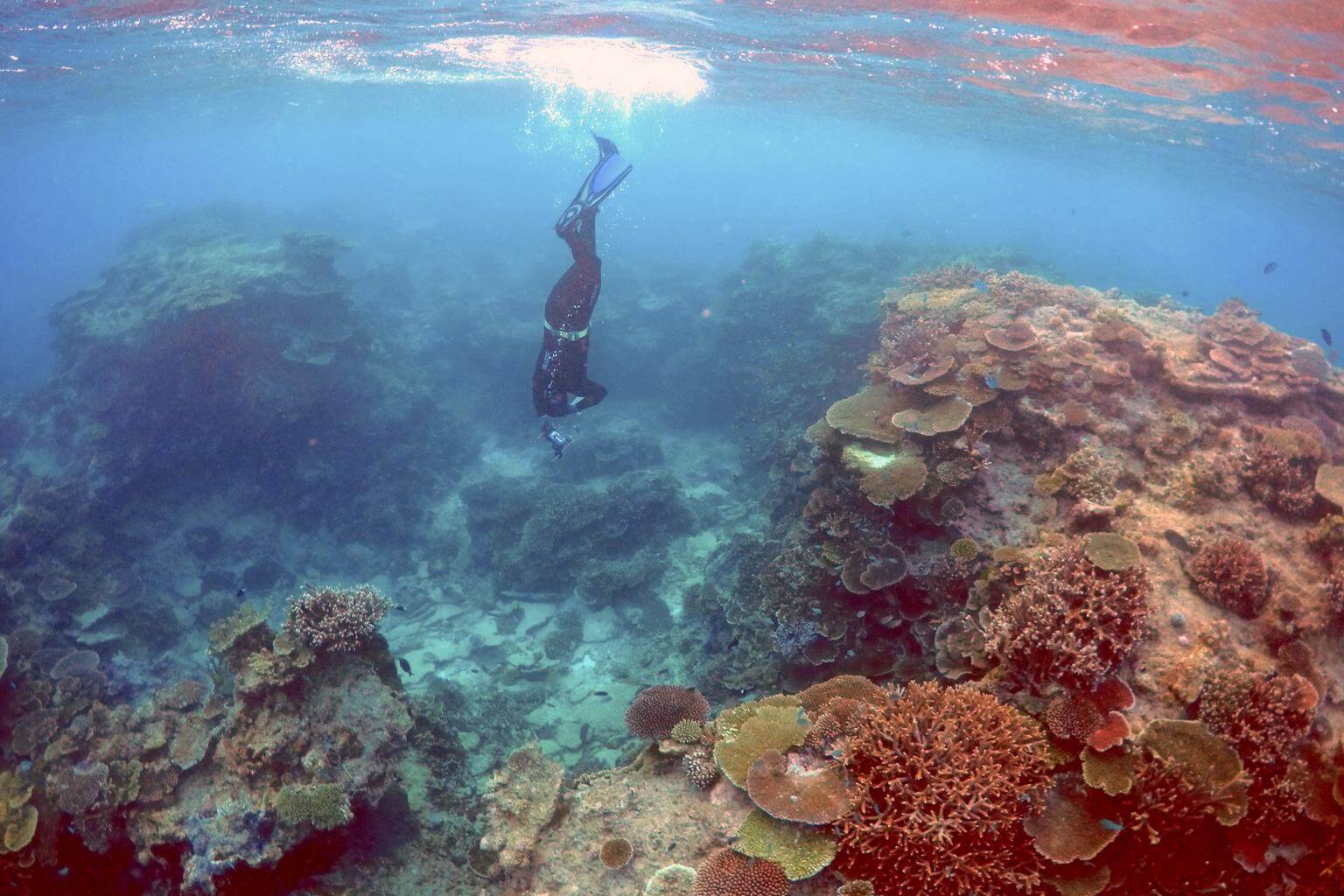Ultra-thin sun shield could protect Australia's Great Barrier Reef
Sign up now: Get insights on Asia's fast-moving developments

Mr Oliver Lanyon, Senior Ranger in the Great Barrier Reef region for the Queenlsand Parks and Wildlife Service, takes photographs and notes during an inspection of the reef's condition.
PHOTO: REUTERS
Follow topic:
SYDNEY (AFP) - An ultra-fine biodegradable film some 50,000 times thinner than a human hair could be enlisted to protect the Great Barrier Reef from environmental degradation, researchers said on Tuesday (March 27).
The World Heritage-listed site, which attracts millions of tourists each year, is reeling from significant bouts of coral bleaching due to warming sea temperatures linked to climate change.
Scientists from the Australian Institute of Marine Science have been buoyed by test results of a floating "sun shield" made of calcium carbonate that has been shown to protect the reef from the effects of bleaching.
"It's designed to sit on the surface of the water above the corals, rather than directly on the corals, to provide an effective barrier against the sun," Great Barrier Reef Foundation managing director Anna Marsden said.
The trials on seven different coral types found that the protective layer decreased bleaching of most species, cutting off sunlight by up to 30 per cent.
"It (the project) created an opportunity to test the idea that by reducing the amount of sunlight from reaching the corals in the first place, we can prevent them from becoming stressed which leads to bleaching," Ms Marsden said.
Researchers from a breadth of disciplines contributed to the project, which was headed by the scientist who developed the country's polymer bank notes.
"In this case, we had chemical engineers and experts in polymer science working with marine ecologists and coral experts to bring this innovation to life," Ms Marsden said.
With its heavy use of coal-fired power and relatively small population, Australia is considered one of the world's worst per-capita greenhouse gas polluters, with advocates urging Canberra to do more to protect the environment.
The reef is also under threat from predatory coral-eating crown-of-thorns starfish, as well as farming run off.
Ms Marsden said it was impractical to suggest that the "sun shield" - made from the same material found in coral skeletons - could cover the entire 348,000 sq km reef.
"But it could be deployed on a smaller, local level to protect high-value or high-risk areas of reef," she added.
"The concept needs more work and testing before it gets to that stage, but it's an exciting development at a time when we need to explore all possible options to ensure we have a Great Barrier Reef for future generations."
Hard corals, also called reef-building corals, produce a rock-like skeleton made of the same material as classroom chalk - calcium carbonate.
Soft corals produce smaller amounts of calcium carbonate.
A report last year (2017) from Deloitte Access Economics valued the Great Barrier Reef as an asset worth A$56 billion, which included its tourism revenues and indirect value for people who have not yet visited the site but know it exists.

